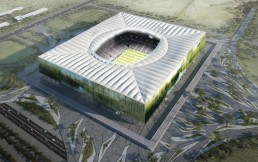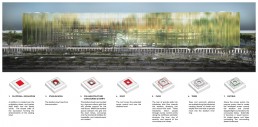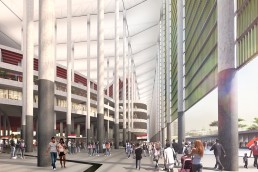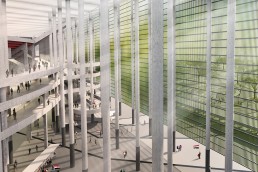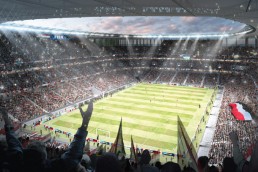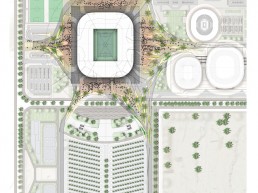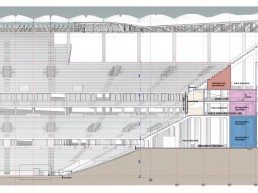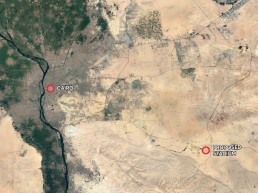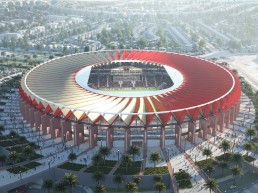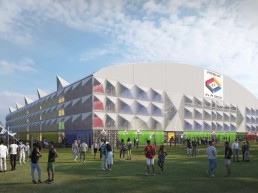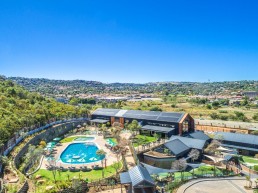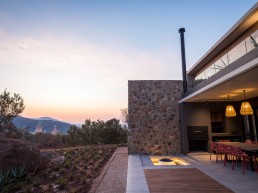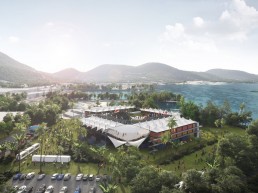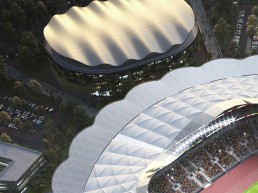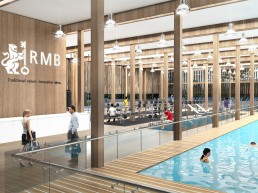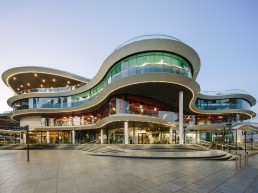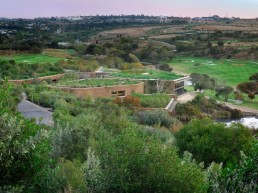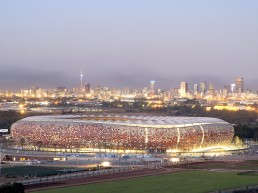New Cairo Capital City is a metropolis emerging from the desert sand to the east of the ancient city of Cairo. At its heart is a sports precinct within which a new national stadium will be built.
The stadium is proposed as a physical and metaphorical building block of contemporary Egypt whilst referencing that which is the lifeblood of both ancient and future Egyptian life – the Nile.
More than just the longest river in the world, the Nile is an elongated oasis around which the culture of Egypt continues to thrive. With each annual flood, it delivers dark, fertile soils into the delta from the Ethiopian highlands, leading ancient Egyptians to name it “Aur” or “Ar” – meaning, simply, black. The stadium precinct is conceived as a piece of the Nile river, a dark ribbon of granite splits into tributaries that ebb and flow in and out of the stadium, creating patches of fertile planting for shade and controlling the movement of people through controlled access points.The stadium bowl sits partially “submerged” in this granite river. The form of the roof and shading around the bowl is square and rational, a strict geometry that expresses the human force of will over this harsh landscape. The underbelly of the bowl is a bright red, referencing the Egyptian national team.
On the banks of the Nile, Papyrus reeds have grown for thousands of years. Their triangular stalks allowing for the creation of the world’s first paper – allowing for ease of documentation and dissemination of knowledge, in some ways, the first information age. This heritage is captured in triangular “lamellas” that sit vertically spaced on the stadium façade, making a transparent screen that creates shade while allowing air flow. These lamellas have the image of the papyrus reeds along the river bank, with a blue sky backdrop, abstracted into them, and like the reeds allow views through to the stadium within, and from within views to the new city growing beyond.
Sustainable Design
The stadium is submerged into the desert sand to minimise construction mass as well as to harness the cool ambient temperature of the earth below the desert. The overarching roof and vertical papyrus screen ensure a constantly cooled environment that will generate air movement.The roof and screen are structurally separate from the stadium bowl,this allows for more efficient construction time, as well as a large scale of modular construction. In the future, this could be deconstructed for re-use elsewhere as separate elements.
| Proposal | 2019 |
| Area | 143 874sqm |
| Number of seats | 83 903 |
| Roof Area | 58 815sqm |
| Facade Area | 43 290sqm |
| Number of Vertical Lamellas | 97 740 |
| Total Length of Ramps | 3 360m |
| Number of Turnstiles | 128 |
| Number of Gates | 104 |
2019 WAF Shortlist – Future Competition category
